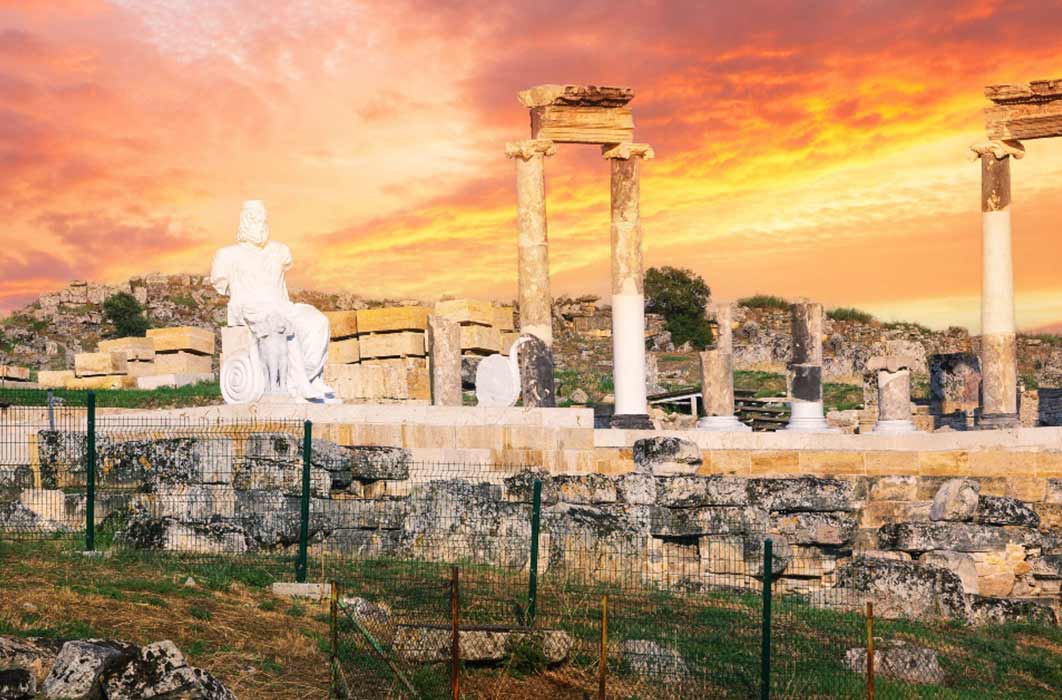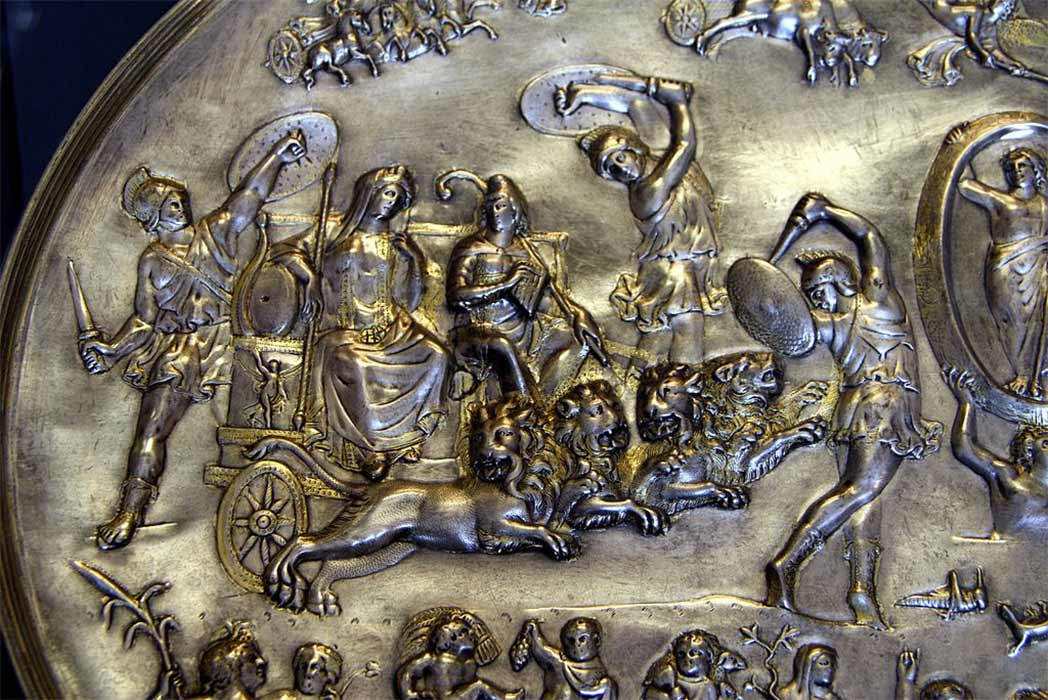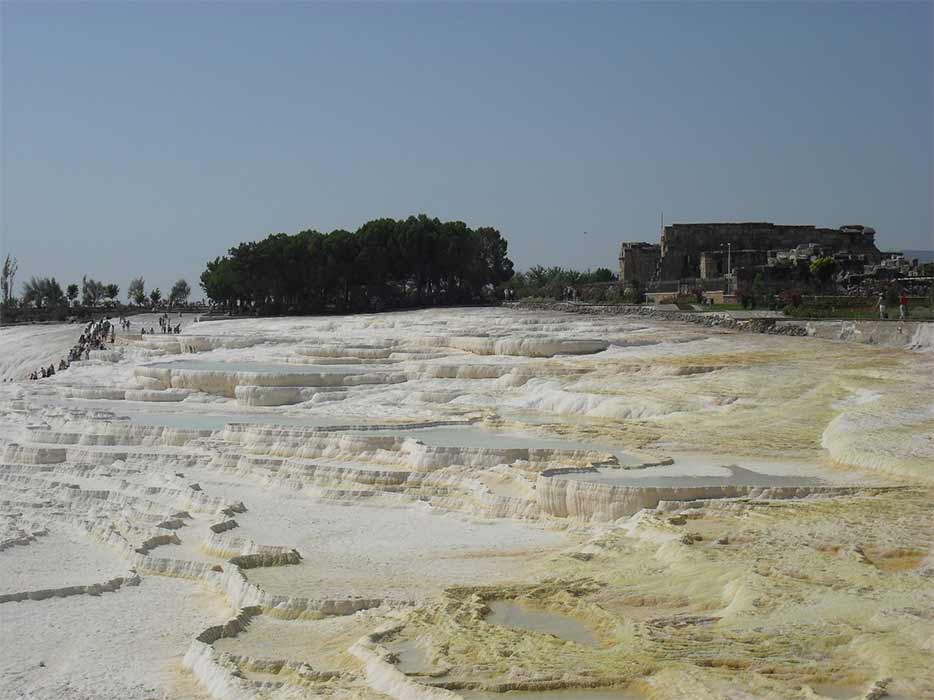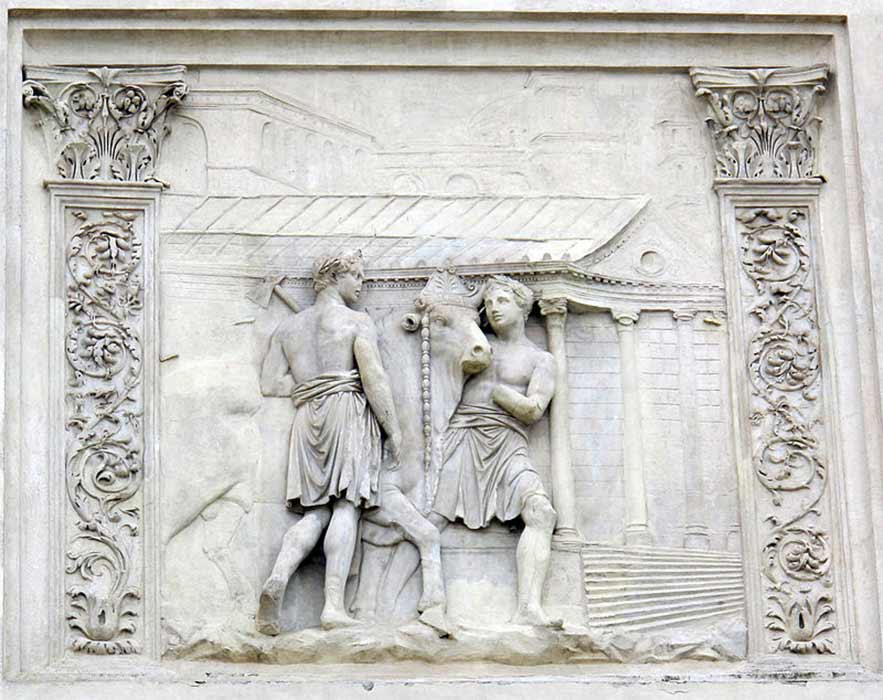
Hierapolis, Phrygian City Of Cybele And Home Of Hades
Cybele was the sole Phrygian Mother Goddess, acting as an interlocutor between the known and unknown, the living and the dead. As such, one of her chthonic cults was established at the Ploutonion or Pluto’s Gate at Hierapolis in ancient Anatolia, where her eunuch priesthood, called Galli, managed to negotiate the toxic vapors which enveloped the sacred precinct. Cybele is considered a ‘Mother of Gods and all beings’ and is interwoven in the history of Hierapolis, as the Greek and later Roman occupiers of the city assimilated her into their religions. She is often depicted riding a chariot drawn by lions, or lions flanking her, reminiscent of the ancient Seated Goddess of Çatalhöyük (c. 6000 BC). Some of her celebrations included frenzied Phrygian dancing, beating the tympanon or tambourine and wild music, which were regarded as exotic foreignness, frowned upon by the Greeks and Romans, but accepted when coupled with Dionysian revelry or cloaked in Trojan ancestry. Her consort was Attis, who castrated himself, giving rise to the eunuch priesthood cult of Galli.

Cybele and Attis seated right, with Phrygian cap and shepherd's crook in a chariot drawn by four lions, surrounded by dancing Corybantes or Galli (c. 200–400 AD) Archaeological Museum of Milan (Giovanni Dall'Orto / Public Domain)
Hierapolis Healing City
Hierapolis, located in the Maeander valley south-west Anatolia, was established in the second century BC by Eumenes II, King of Pergamum, (ruled 197–159 BC) and according to legend he named it after Hiera, the Amazon queen of Telephus, the founder of Pergamum, but Hierapolis can also mean Sacred City due to the number of temples found there. There are no records to confirm the naming of the city, but it was custom for Hellenistic kings to name cities after their family members or ancestors, for example the Seleucid King Antiochus II (261-253 BC) founded and named Laodicea in Phrygia in honor of his wife, Laodice. Incidentally, Eumenes II sided with Rome against the Seleucids, which ended with Rome defeating Antiochus the Great in the Battle of Magnesia (December 190 or January 189 BC). The region of Hierapolis was assigned to Eumenes II of Pergamum after the battle.

View of Pamukkale thermal cascades with ancient ruins of Hierapolis in the background (Image: © Micki Pistorius)
What makes this city so exceptional, is its thermal springs, caused by tectonic shifts, called Pamukkale. Professor Fransesco D’Andria, chief archaeologist wrote: “Pamukkale derives its name which means Cotton Castle from the white travertine deposits formed by the thermal springs.” The soil is rich and fertile, as is evidenced by the surrounding valley of cotton fields. The thermal water contains a high concentration of calcium carbonate, which over time hardens to form travertine rock. The cascading water sculptured terraces and rock pools, resembling a wonderous waterfall decorated with frozen icicles or the ‘white clouds of heaven,’ yet the temperature of these pools vary between 35 to 100 degrees Celsius (86 to 212 Fahrenheit).
Long before the Roman period people migrated to the thermal springs in search of cures to restore their health. During the Roman period visitors could opt to be treated on a short-term basis, but some extended their stay and therapies. Treatments were supervised by priests as well as doctors.
- Lives And Losses Of Laodicea, Crown Of Phrygia
- Geographic Gateways to the Underworld
- Dirty Dancing in Ancient Religion and Rituals
Attalus III, the son and heir of King Eumenes II and his Queen Stratonice, was more interested in studying medicine and botany, than ruling, and bequeathed the Kingdom of Pergamum to Rome in 133 BC, to avoid bloodshed. In 131 BC Aristonicus, the brother of Attalus III, rebelled against Roman rule but the revolt was suppressed, and the Kingdom of Pergamum, including Hierapolis, fell under Roman rule.





